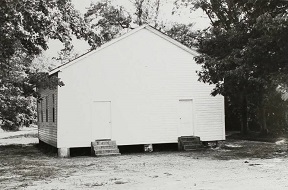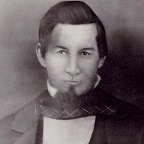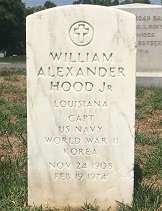
|
John Henry 'Sebastian' Haupt/Houpt III |
John Henry "Sebastian" Haupt III -- also spelled "Sebastin" and "Houph" -- was born on May 17, 1781 in Philadelphia, the son of John "Henry" Sebastian and Maria Catharina (Youngken) Haupt Jr.
One account calls him the "son of a rich ship-owner." He is known to have migrated to Alabama in young manhood.
On Aug. 23 or 26, 1817, in Clarke County, AL, at the age of 46, he entered into marriage with Matilda Brewster (Sept. 20, 1794-1880), a native of Georgia. Their nuptials were conducted by justice of the peace William Cochran.
They became the parents of seven known children, among them Eliza Haupt (died in 1819 at age one), Lewis Houpt, Nancy "Anna" McDowell, William Walton Haupt, Stephen Adams Haupt, Sebastiana M. Houpt and an unnamed infant son who died in 1835.
 |
| Slaves picking cotton in Alabama, 1860 - Library of Congress |
In the 1830 federal census enumeration of Greene County, AL, there are 22 people shown in the household, including 15 slaves. From there, the family may have relocated for a time to Texas but returned to Alabama.
Sebastian is named in the book Historic Families of Alabama, which stated that he was "for many years a prosperous coffee planter in the Island of Trinidad, and on returning to this country, avoided the rigors of the northern winters by settling upon large traces of rich land which had bought in Greene and Sumpter counties, Alabama." A profile of their son in William Leslie Black's book A New Industry, Or Raising the Angora Goat, and Mohair, for Profit, states that in 1833, Sebastian bought largely of lands on the Bigbee river from the Choctaw Indians, upon which he settled." The New Industry also states that Sebastian "was of an inventive turn of mind, and had the honor of digging the first artesian well ever sunk in the United States."
Another of their residences in the early 1830s was in McDowell, Sumter County, near Belmont and across the river from Demopolis, Marengo County. The tract was comprised of 126.25 acres, called "Stephens Bluff," at the legal description Fraction Section 27, Southeast Quarter Township, Range 2 East.
With his health in decline, Sebastian wrote his last will on Sept. 30, 1835. Sadly, he died three days later on Oct. 3, 1835 near Demopolis, AL. Interment was in a small burying ground west of Demopolis today known as the "Houpt" Cemetery, containing less than two dozen graves.
|
Palestine Baptist Church, 1981 Pate Survey of Black Churches in Sumter County |
In September 1837, Walter Chiles filed a petition in Sumter County Orphans Court, asking that Matilda make title to her real estate at Stephens Bluff, "agreeably to a bond given said petitioner," as advertised in the Voice of Sumter newspaper.
The widowed Matilda outlived her husband by 35 years. The New Industry book says that she "was a woman of remarkable energy, and practical sense, as has been clearly demonstrated by the manner in which she reared her son [William Walton], who was only five years of age at the time of his father's death." She wed again to Merrit Hodgins (1796-1868). Matilda was rendered a widow for a second time when Merrit died on Nov. 22, 1868, with burial in the Houpt Cemetery.
Death swept her away at the age of 85, in McDowell on July 19, 1880. Her remains sleep in the sacred soil of Houpt Cemetery.
A burying ground on the property, called the "Palestine Cemetery," may hold the remains of their slaves. The site appears to have been connected with the nearby Palestine Baptist Church, a Black congregation of the Missionary Baptist denomination, Built in the 1890s, the wood-frame church is located off Sumter 23 on an unpaved road six miles south of Belmont. As of 1981, it had 20 active members, led by Rev. Nathaniel Carter of Jefferson, AL, with Joe Bizzell and Leroy Young serving as deacons. At that time, written church records were kept in the Robinson Bank of Demopolis. The church is documented in the 1981 James Pate Survey of Black Churches in Sumter County, as maintained in the Julia Tutwiler Library Digital Collections of the University of West Alabama.
One of the Houpts' descendant, Mrs. Monroe Adams, living in Statesville, NC, once wrote to the Alabama State Department of Archives in Montgomery, seeking information about Sebastian so that she could qualify for membership in the Daughters of the American Revolution.
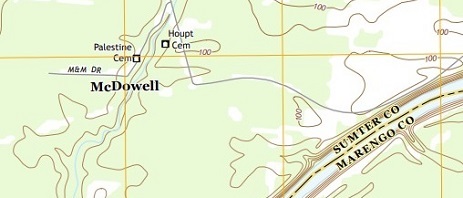 |
| Site of the Houpt plantation and family cemetery at McDowell, AL and nearby "Palestine Cemetery" which may hold the dust of their slaves. U.S. Geological Survey - Below: Demopolis as of 2010. Library of Congress |
 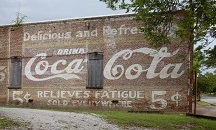 |
~ Col. William Walton "W.W." Haupt ~
|
Col. William Walton and Sarah Haupt Courtesy Cheryl Schouten |
Son Col. William Walton "W.W." Haupt (1828-1907) was born on Feb. 10, 1828 or Jan. 1830 in Greene County, AL, although some in his family thought him Pennsylvania-born. His birthplace was at the forks of the Bigbee and Warrior rivers.
He was only about seven years of age when his father died. He attended grade school in Demopolis, near their home at McDowell. He then went on to spend two years at Centenary College in Mississippi and two years at what became Washington and Lee College in Virginia. While in Virginia, he led drilling for a Cincinnati company of cadets on the grounds of the Virginia Military Institute. At the age of about 20, circa 1848, William relocated to Texas and farmed cotton west of the town of Bastrop, on the bend of the Colorado River. He was twice-wed. His first bride, whom he married on March 25, 1851, was Alexine H. Colgin ( ? - ? ). Their wedding was conducted by justice of the peace Ben J.H. Gaines back in Sumter County, AL. Sadly, the marriage ended with Alexine's death a short time later. As enumerated in the 1850 Slave Schedules for Belmont, he was marked as owning 14 slaves ranging in age from 1 to 35.
On May 22, 1855, in the bride's hometown of Matagorda, Matagorda County, TX, he was united in matrimony with first wife's cousin, Sarah Ann Rugeley (Feb. 1, 1836 or May 1840- ? ), also an Alabama native and the daughter of John and Eliza Clopton (Colgin) Rugeley. Together, they bore a brood of offspring, several named for Confederate Army commanders -- Sebastian Haupt, Sebastiana Matilda "Bassie" Haupt, Leila Haupt, Alice B. Haupt, General "Beauregard" Haupt, Lewis McDowell Haupt Sr., Louise Haupt and Ouay Touay Haupt. As of 1856, the Haupts dwelled in Bastrop County. Then after William visited Hays County, TX and became "infatuated" with the possibility of introducing angora goats to the region, they moved in December 1857 to Kyle, TX. He is said to have purchased eight of the goats and cross-bred whem with the shorthaired Spanish goat. For this innovation, he has been cited in Arda Talbor Allen's Twenty-one Sons for Texas , the Portable Handbook of Texas and the Southwestern Historical Quarterly (1987). Paul H. Carlson's 1982 book Texas Woollybacks credits William with running "the first steam cotton gin used in his area." A lengthy profile in William Leslie Black's book A New Industry, Or Raising the Angora Goat, and Mohair, for Profit, states that after the move to Kyle, William also "constructed with a steam whistle and a pipe from the boiler to the pick-room, to extinguish fire, and discharged the exhaust pipe into the chimney as a spark arrester, all of which was his own construction." The New Industry book says that William:
...was never fond of a city life, and boasts of the fact that he “never lived a day in town in his life.” His preference was for a farm life, where he could surround himself with all the comforts of a home, and indulge his fancy for various kinds of live stock, of which he was especially fond. He introduced the first Essex hogs, and Brahma cattle, into Western Texas, and has invented many appliances for economy in farm work. He has always been a regular subscriber to agricultural papers, and has contributed many valuable articles upon various subjects relating to live stock and farming.
 |
| Above: A New Industry, Or Raising the Angora Goat, and Mohair, for Profit. Below: William and Sarah in older age.Courtesy Google Books and Cheryl Schouten. |
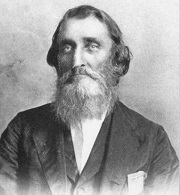 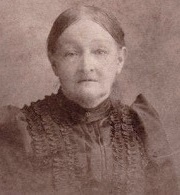
|
When the federal census enumerations were made in 1860, 1870 and 1800, they made a home on a farm plantation in Hays, Hays County, TX. The slave schedule of the 1860 census shows that William owned nine slaves, four males and five females, ranging in age from 20 to 60. William is known to have been appointed postmaster of the town of Mountain City, Hays County, effective Oct. 24, 1860. He also was an inventor and on Oct. 17, 1871 received a patent for a new type of chair. In his claim, he said that "This invention relates to that class of chairs in which the back, seat, foot-rest, and head-rest are all self-adjusting, and operated by the natural movements of the occupant, who is enabled to occupy a position erect, horizontal, or at any desired inclination between the two." As of the early 1880s, he owned a herd of 600 heads. William wrote a lengthy summary of his operations that was published in John Lord Hayes' 1882 book, The Angora Goat; Its Origin, Culture, and Products:
In breeding the pure Angora on the smooth-haired Mexican goat, the fleece in the offspring appears for the first time. Therefore, the fleece of the offspring is not affected by atavism. A grade billy will breed as well as a pure blood in proportion to his grade. The fibre in any grade being as fine or finer, at least here, as in the pure-blood, successive crosses are needed only to raise the grade and lengthen the fibre. This, however, is only my own idea. Whilst I set down as a rule that each cross, from the first up, adds a half pound to the fleece, yet I do not value any fleece much that falls below the fifth cross on account of kemp, though it is equally valuable in making saddle girths, for which it is more suitable than hair or buffalofur, moss, or any other material, being soft, strong, and durable. All my mohair has heretofore been worked up in Austin in that way. If factories were established for that purpose, they would consume all the mohair in the country for the next ten or fifteen years.
 |
| Above: angora goats of the type that William raised. Below: William's narrative in the book The Angora Goat. Courtesy Google Books |
 |
William also authored an article in an 1884 edition of Texas Stockman and Farmer, entitled "The Angora Goat." It appears that he was in connection with his first cousin, Col. Herman Haupt, a Union Army hero of the Civil War, who became interested in angora sheep-raising. Herman and perhaps others obtained a "liberal" charter from Virginia, known as the "Virginia Angora Company," which received a mountainous 160-square-mile tract with the intent of breeding 800 thoroughbred Angoras from California, and 20,000 Mexican and Maltese goats. The enterprise was abandoned with the Angoras could not be obtained. The New Industry profile said that in 1895, William:
...concluded to turn his attention to horticultural farming, and was forced to dispense with his goats, for which he had formed a very strong attachment. He, at first, thought of retaining an interest in them, but finally decided to sell them out and out, and Mr. W. G. Hughes, of Hastings, Kendall County, became the fortunate owner, and is still continuing to breed them. True to his nature, Col. Haupt established his garden upon the most approved plan, and now has under the most skillful cultivation thirty acres, which is said to be the most magnificent sight, in the shape of a garden, that has ever been seen in the State of Texas. He has several thousand fruit trees, consisting mostly of plums, which have proved to be most profitable, and a large amount in grapes, which are likewise very productive. But the main product is the dewberry and blackberry, of which he has fifteen acres, which supports a small army of women and children during the "berry time." Depending upon the elements for water, in West Texas, has always resulted in failure, and Col. Haupt has provided against all contingencies in this respect, by the means of a powerful windmill, and a tank, covering one acre of ground, in the center of his garden, from which he can irrigate his land at will. He is now contemplating the purchase of a gasoline engine, to be used in the event of necessity, which, however. occurs only for a short time, in the hot months of July and August...
His magnificent estate consists of 3000 acres of beautiful land, 2500 of which is a pasture, on which three hundred improved cattle are run, and the remainder, between 400 and 500 acres, in farm and garden. Col. Haupt has a peculiarity of always imagining he is "hard up," and, with a man of his activity, it is not likely he would keep much loose cash around his house, yet he is recognized by all who know him as being as nicely situated in the comforts that this world can supply as anyone could wish to be, and his ranch is the envy of all who have had the pleasure of visiting it. He enjoys the good will of his neighbors, and is always glad to entertain his friends. He visits town about once a month, but rarely takes a seat, and is back at his ranch in a very few hours. At the advanced age of seventy-two, he is as active in mind and body, as a man of forty, and bids fair to live a considerable time, which is, doubtless, explained by the even tenor of his life.
As of 1900, census records show William earning a living as a farmer and gardener. Toward the end, he began to write a will dividing his ranch acreage equally among his children, except for his mentally ill daughter Alice Landers, who was estranged from her husband and living under her parents' roof. But he did not complete or sign the will, nor have it witnessed. Sadly, he died in Mountain City on Aug. 26 or 27, 1907. His remains were laid to rest in the Kyle Cemetery, On the face of his tall grave marker is the scripture from Jesus' Beatitudes, "Blessed are the pure in heart, for they shall see God." Their son Lewis, although not named as estate executor, but with the tacit blessing of his siblings, took charge of the estate, including his property, pasture lands and private papers, and used the income for their widowed mother's support. Sarah Ann outlived her spouse by five years. Death claimed her on Sept. 1 or 8, 1912. After Sarah's death, son Lewis distributed the farm proceeds with his brothers and sisters, except for their sister Alice Landers, who was considered "insane" and estranged from her husband, and had made a home with her parents. He also sold an undesignated 125-acre tract and used the money to send his sister to a sanitarium in San Antonio. Lewis did not admit his father's will for probate for about seven years, and under the law, it was barred under a statue of limitations. It all became a mess of what the purported will could dictate, what Alice was owed, and then when a man named Michaelis tried to buy Alice's interest, it went to court. The resulting case, Michaelis v. Nance et. al., No. 5590, was heard in the Court of Civil Appeals of Texas at Austin on March 2, 1916. Going on the witness stand to give testimony were son-in-laws W.H. Barbee and J.M. Nance, sons G.B. Haupt and Lewis Haupt, and daughter Touay Barbee, with their words included in the printed summary.
William Walton Haupt's chair patent - Courtesy Google Books
Son Sebastian Haupt (1856- ? ) was born in 1856. His life story seems to be lost to history.
Daughter Sebastiana Matilda "Bassie" Haupt (1857-1938) was born on Jan. 19, 1857 in Bastrop County, TX. She relocated to Kyle, Hays County, TX with her parents when she was about a year old and stayed for the balance of her many years. At the age of 20, in Oct. 1877, she was united in matrimony with Jeremiah Milton "J.M." Nance (April 6, 1850-1926). The 11 children they bore together were Haskel Joe Nance, Elmo Pate Nance, Albert Pate Nance, Lola Bunberry Armstrong, Jeremiah Milton Nance Jr., Flora Lee Howell, Stella Nance, Sally Barbee Smith, Winnie Tolbert, Mattie Parke Marcelline and Joseph Haupt Nance. When J.M. read his father-in-law's will on March 20, 1914, and saw that had not been witnessed, he took it to a lawyer in San Marcos and was told it was valid. The question of whether it could be admitted to probate, and its terms ironclad, became the noted court case Michaelis v. Nance et. al., No. 5590, heard in the Court of Civil Appeals of Texas at Austin on March 2, 1916. The Nances' home at one time was in San Marcos and later two miles east of Kyle. J.M. passed away in a San Antonio hospital on Sept. 16, 1926, bringing to a close their union of nearly 50 years. Leading his funeral rites was Methodist Church pastor Rev. J.E. Morgan. Bassie died at the age of 81 on April 14, 1938. Funeral rites were jointly conducted by Rev. J.E. Morgan, Rev. E.N. Sullivan and Rev. A.L. Miller. Burial was in Kyle Cemetery. An obituary in the Austin American said she was "one of the oldest Central Texas pioneers" and was survived by 16 grandchildren and one great-grandchild.
Daughter Leila Haupt (1858-1924) was born on March 6, 1858 in Bastrop County, TX. She first was joined in wedlock with widower James Wylie "J.W." Williamson (July 26, 1847-1886). His first wife Mary E. (Landers) Williamson had died in 1883, and he brought these stepchildren into the second union -- James Allan Williamson, Grace E. Williamson Miller and Richard Andrew Williamson. Sadly, James died the year of their marriage, on Nov. 18, 1886, even as Leila was expecting their firstborn. Burial was in Richland Cemetery in Brinker, Hopkins County, TX. In 1887, she gave birth to Annie Wiley Blumrich Bowers. Later, she entered into matrimony with (?) Cooper ( ? - ? ). She was twice-widowed by 1916. The angel of death cleaved her away at the age of 66 on March 7, 1924. Interment of the remains was in Lockhart Municipal Burial Park in Caldwell County, TX.
Daughter Alice B. Haupt (1859-1937) was born on June 16, 1859 or 1863 in Hays County, TX. On May 8, 1883, at the age of 24, she wed Col. Andrew Pike "A.P." Landers (March 4, 1843-1920), son of John C. and Jane (Goodman) Landers of Batesville, AR. The wedding was held in the local Baptist Church in Kyle, presided by Rev. W.E. Hall. In announcing the happy event, the Austin American-Statesman reported that "The ceremony was witnessed by a large number of friends, many of whom were from Austin. There were a large number of costly and handsome presents. The young couple are at the Raymond house, and will leave for Sulphur Springs, their future home, on the International this morning." At the time of marriage, Andrew was employed as Hopkins County Clerk. He is known to have served in the Confederate Army during the Civil War as a member of the 32nd Texas Cavalry, Company D. They made a home in Sulphur Springs, Hopkins County, TX. Andrew was active in public affairs and in 1889 served on a committee of the North Texas District Alliance to establish a woolen mill in town. He was quoted in the Abilene Reporter in August 1890, saying that "In 1889, the women of Hopkins county used $10,000 worth of snuff; the men used $36,000 worth of tobacco, and the people generally paid $75,000, and for flour $100,000. The first two items are luxuries and could, in time of depression, be dispensed with. In regard to bacon and flour, there is no reason why Hopkisn county should not raise a surplus of both. I do not know the amount paid for whisky, but it is enormous. We are improving, however, Last year there were 2,000 chattel mortages filed in my office, against only 300 this year. Ir the crops come up to the present prospects, Hopkins county will be wonderfully prosperous this year." Tragically, by 1907, Alice had become "insane." Estranged and divorced from her husband, she moved back home and lived with her parents in Mountain City. During that time, Andrew and the two sons remained in their residence at Sulphur Springs. Because she had lived with her parents, and then after their deaths, her brother refused to provide her with her share of the estate assets. Alice's siblings did agree to sell an undesignated 125-acre parcel and use the funds to send her to a sanitarium in San Antonio. In time, the matter went to court. Andrew died in Sulphur Springs of heart disease on April 17, 1920. Burial was in Richland Cemetery in Brinker, Hopkins County. Her home in the 1930s was with W.H. Landers in Dallas, TX, at the address of 2536 South Ervay Street. She lapsed into a coma of unknown origin and died at the age of 74 on Sept. 9, 1937. Burial was in Sulphur Springs, TX.
Son General "Beauregard" Haupt (1861-1927) -- known as "G.B." for short -- was born on Jan. 21, 1861 in Mountain City near Kyle, Hays County, TX. He appears to have been named for General Pierre Gustave Toutant-Beauregard, onetime superintendent of the U.S. Military Academy at West Point who later commanded the Confederate Army during the Civil War. In 1890, G.B. tied the marital knot with Mary Lorine Thompson (1869-1945). Their family of children included Addie Mavis Groos, Anna Laura Sills, Lela White, Elizabeth French Fletcher and Thomas Walton "Tommy" Haupt.. The Haupts were longtime farmers in Kyle. He is known to have gone on a fishing trip with friends to Colorado in the summer of 1913. Sadly, G.B. contracted a serious illness which he endured for the final two years of life. He died in Mountain City, TX at the age of 66 on April 18, 1927. An obituary was printed in the Austin American. Funeral services jointly were conducted by Rev. J.E. Morgan, of the Methodist Church, and Rev. Gilbert, of the Baptist Church. His remains sleep for the ages in the local Kyle Cemetery, but his grave is not believed to be marked. Mary Lorine lived for another 18 years. In Feb. 1929, she endured the untimely death of their son Thomas at the age of 19 following a lingering, four-year illness of Hodgkin's Disease. She passed away in Austin, TX on Nov. 27, 1945.
 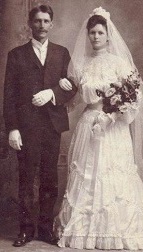 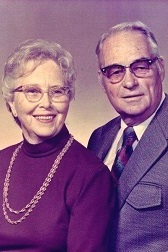 |
| Lewis McDowell and Lucy (Harris) Haupt Sr. and Lewis and Stella (Geren) Haupt Jr. - Courtesy Cheryl Schouten |
Son Lewis McDowell "L.M." Haupt Sr. (1868-1963) was born on March 19, 1868 or in June 1868 or 1870 in Texas. (Records differ.) A bachelor at the age of 30, in 1900, he resided with his parents in Hays County, TX and was employed as a cattleman. He helped with his father's business affairs even after moving to the nearby town of Kyle. In 1873, he wed Lucy Gillespie Harris (1875-1968). They became the parents of four -- William Clodius Haupt, Lewis McDowell Haupt Jr., Erin Inez Moody and Mavis Harris Bennett. For decades, the Kyles were ranchers near Kyle. They belonged to the Wortham First Baptist Church. In about 1958, as Lewis reached his 90th birthday, the couple began living alternately with their adult children in Bryan, Coolidge and Wortham, TX. At the age of 95, he surrendered to the legion of death's angels on Sept. 21, 1963. The remains were lowered into the sacred soil of Kyle Cemetery. The Mexia Daily News carried an obituary. Lucy outlived him by five years. She died in Wortham at age 92 on March 4, 1968. Her funeral services were presided by Rev. Joe Cariker.
Daughter Louise Haupt (1874- ? ) was born in 1874. Nothing more is known.
Daughter Ouay "Touay" Haupt (1878-1947) -- also spelled "Touai" -- was born in May 1874 or 1878 in Texas. She was single in 1900 and dwelled with her parents in Hays County. She was joined in wedlock with William H. "W.H." Barbee (Dec. 7, 1872-1967). Together, they produced two known children, William Gaston "Pete" Barbee (1901-1960) and Mary Elizabeth Barbee (1911-1975). William earned a living over the years as a rancher and banker. They were Methodists, and he belong the the Kyle lodge of the Masons. Burdened with exhaustion from psychosis and senility at the age of 72, Touay was admitted to the Austin State Hospital, remaining for a month and 11 days until death. She surrendered to the angels on June 2, 1947. The body was shipped to San Marcos, TX for interment. William endured as a widower and lived for another two decades in Kyle. He married a second time on June 20 1949 to Lillian Taylor ( ? - ? ). William and Lillian made their dwelling in Childress and then moved in 1966 to Fort Worth to be nearer to her daughter, Mrs. Preeston Waller. The spirit of death claimed his life in Fort Worth at the age of 94 on Aug. 24, 1967. An obituary appeared in the Childress (TX) Index.
~ Son Lewis Houpt ~
|
Lewis Houpt Courtesy Florence Haupt King |
Their plantation was a place of social activity during their years together and even for Matilda in widowhood. The Houpts are known in Jan. 1866 to have hosted the wedding of Lt. J.Z. Tutt to C.M. Taylor by the hand of Rev. E. Philips. The federal census of 1870 shows the family together in the Belmont location, with Lewis listed as a farmer, and the census-taker spelling their name "Hout." The family was plunged into mourning when son Lewis died on April 6, 1872 at the age of about one.
Lewis died at the age of 52, in Belmont, Sumter County, on Jan. 19, 1873. His remains were lowered under the sod of Houpt Cemetery. In April 1873, Matilda placed legal advertising in the Livingston Journal, advertising the upcoming Nov. 29 same of the family farm and contents, including horses, cattle, wagons, plows and farming implements. The ad said that "The stock of cattle to be sold is large and valuable, and presents special inducements to purchasers." Matilda survived as a widow for another 48 years. She made news in the Journal in May 1883 when giving a "bouquet party" in her home, featuring plays and music by her daughter Lela. By 1889-1890, her home community bore the name of "McDowell's," and in April 1890 her married daughter Erin returned from St. Louis for a visit of several weeks. She was joyous at the birth of daughter Lela's first baby and namesake in July 1894, only to be shattered in grief a month later when Lela died at age 29. Matilda in May 1906 hosted "One of the prettiest home weddings of 1906," said Livingston's Our Southern Home, when Robert Eggleston DeNio and Helen Buckley Davidson tied the knot, "solemnized at the beautiful rural home of Mrs. M.D. Houpt at McDowell's."
Sadly, she sustained serious injuries in a fall in January 1921, and fearing the worst, her grandchildren were called to her bedside. There was to be no recovery. Ten days later, she surrendered to the spirit of death at age 88 on Jan. 25, 1921. An obituary in the Demopolis Times said that "Sumter county, the Demopolis Section, and the whole circle of acquaintances who knew her, suffered a loss... She had been for many years a resident of McDowell, living a life that endeared her to those with whom she came in contact, useful, faithful, generous, loving and kind. That she has fallen asleep removes her from the active affairs of life, but the memory she leaves behind fills many hearts with life that was not lived in vain." Funeral services were held at McDowell, conducted by the Rosenbush Furniture Company, led by Rev. J.R. Larkin of Coatopa. Her only survivors were her daughter Erin and granddaughter Lela Speed.
In an interesting twist, in 1870, among the Houpts' near neighbors were three Black families named "Houpt." All had the occupation of "farm labor" -- Alex Houpt (born in Alabama in 1830) and Judy (1830) and children Georgie (1860), Nancy (1863) and George (1864) -- Charles (born in Virginia 1810) and Minerva Houpt (1820) and family members Gabe (1840), Sarah (1840), Bettie (1860), Charlie (1862), Sam (1866) and Adaline (1868) -- and Henry Houpt (born in Alabama in 1840) and Caroline (1840) and daughter Phalby (1863). Who were they? And why did they bear the Houpt name? More on these Houpts appear later in this biography after the section on Lewis's daughters. Then in 1880, these Black families of Houpts are listed in the federal census enumeration of Belmont or Demopolis -- Sam (born in Alabama in 1823) and wife Caroline (1835) and children Cornelia (1860), Mose (1871), James (1873), Louisa (1875) and Helen (1877) -- and Columbus Houpt (born in Alabama in 1852), wife Mollie (1850) and children Nancy (1869) and Frank (1875). By 1900, the only known Houpt family of color in Belmont was 56-year-old widowed farmer Sarah "Haupt" (born in Alabama in March 1844) and children Erin (April 1884) and Coleman (May 1886), who were living just two houses away from the white family of our Matilda, including her farm manager John B. Green.
Daughter Erin A. Houpt (1859-1942) was born in 1859. Her home in young womanhood was in Belmont, AL. In early Nov. 1881, when she would have been about age 22, she was united in matrimony with Confederate Civil War veteran William Henry Weller (July 7, 1838-1916) of St. Louis. In announcing the marriage, the Livingston Journal said it was "the 'event' of our neighborhhod, this week... It was celebrated with a simplicity that added to its impressiveness, and befitted the joining of loving hearts pledged in matrimony. There were few guests other than members of the Bride's family and her Sabbath's chool class." With her father deceased, she was given away in marriage by J.W. Phares, with Rev. James M. Patton presiding at the ceremony, held at McDowell's Station, "which was beautiful and impressive. But I must say something of the Bride's dress -- for the benefit of the Journal's feminine readers. She was arranged in a traveling dress of myrtle green cloth trimmed with plush of the same shade, and a hat to match; brilliant diamonds brightening the sombre costume... After partaking of a sumptuous Supper gracefully presided over by the hospitable mother of the Bride, the guests accompanied the happy couple to the Railroad station, where as the 7:40 train drew near, good-byes and good wishes were hurriedly spoken. In Miss Erin St. Louis gains a worthy Bride; while Belmont loses its most popular young lady -- though we have beauties left." In a separate article about the wedding, the Journal said "We are reminded that the Groom 'did service' in the South during the war -- defending Southern rights and opposing invading armies." During the war, he was assigned to Capt. Landis' Company, Missouri Light Artillery and Capt. Lowe's Company, Missouri Artillery (Jackson Battery). The couple remained in St. Louis for a number of years, with Erin occasionally returned to her mother's home for visits of several weeks' duration. Together, they bore a brood of offspring, among them William H. Weller Jr., Rosa Lela Hood and Douglas H. Weller (March 23, 1888-1906). The Wellers later moved from St. Louis to Birmingham, AL, where he "was the founder of the first pipe shop here," said the Birmingham Post-Herald, "was one of the former owners of the street car and ice business, and also was head of the old Weller Rolling Mill company." Sadly, their son Douglas died at the age of 18 on Dec. 4, 1906. Interment was in the Houpt family cemetery in Alabama. The couple's final home together was in the Bayview Apartments in Birmingham. At the age of 78, William passed away in Birmingham on Christmas Day 1916. His remains were shipped to McDowell to be laid to rest in Houpt Cemetery. A notice in the Birmingham News said "his death followed an illness of several months," and the Post-Herald referred to him as "a pioneer citizen of the district." The widowed Erin took out a mortgage loan on her acreage from L.H. Weller in May 1922 but just two years later defaulted on her payments. The tract was sold at auction in mid-November 1924, and, said Our Southern Home, included the following: "six acres in the southeast corner of the southeast quarter of the southeast quarter of section 13, Township 18, Range 1 East, the south half of the Southwest quarter of section 18, and Northwest quarter of Section 19, Township 18, Range 2 East, less the ten acres allotted to Mrs. Erin A. Weller, and the 10 acres allotted to Leila S. Smith, now Leila S. Speed... The tract above described and owned by the said Mrs. M.D. Haupt at the time of her death and contains in all 226 acres more or less." Erin died in 1942.
- Granddaughter Rosa Lela Weller ( ? - ? ) resided in Anniston and Gadsden, AL and on Oct. 15, 1903, was joined in wedlock with William Alexander Hood ( ? - ? ), son of William and Vilanta (Yeilding) Hood. William's father has been described as a leader in the development of Birmingham, Elyton and a co-founder of the predecessor firm Yeilding Brothers Company. Their wedding was announced in the Gadsden Times-News, which said the bride "is one of the handsomest young women in the state and possesses a lovable character. Mr. Hood is a leading business young man in Birmingham and is well worthy of Miss Weller's heart and hand." The Hoods' two children were Cmdr. William Alexander Hood Jr. and Matilda Brereton. An alumnus of Alabama Polytechnic Institute, William spent his professional career as a mining engineer. The family held a membership in the First Methodist Church. Their final address together was 2704 Hanover Circle, Birmingham. Sadly, at the age of 75, he suffered a massive heart attack and died in Birmingham's St. Vincent Hospital on April 26, 1952. His photograph accompanied his obituary in the Birmingham News, which said that he was a "member of a family which helped found Birmingham and Elyton..." Graveside services were conducted by Rev. Carl Tolleson at Oak Hill Cemetery.
Great-grandson Cmdr. William Alexander Hood Jr. (1908-1974) was born on Nov. 24, 1908. He joined the U.S. Navy in young manhood and went on to take part in World War II and the Korean War. On May 24, 1941, in a ceremony held at First Methodist Church of Pensacola, FL, he married Ola Mae "Pinkie" Reeve (June 11, 1911-2004), originally from Pensacola, FL and the daughter of Elizabeth Hanna Reeve. Rev. Fletcher Calhoun presided. Together, the couple bore three known children, William Alexander Hood III (1942- ? ), Elizabeth H. Gaines and Rose F. Chester. Ola Mae had attended Florida State College for Women and then Duke University and at the time of marriage was a second grade teacher. William Jr. served with the Naval Air Station in Jacksonville, FL and eventually was promoted to captain. Over the first two decades of their married lives, said an obituary, Ola Mae was "wife, mother, hostess and more at various military stations in the U.S. and abroad, including Alvin Callender Field N.A.S. where Capt. Hood was the first commanding officer." They remained in New Orleans following retirement in 1962. She attended Trinity Episcopal Church and was active with the Orleans Club, the Junior League of New Orleans, Women's Guild of the New Orleans Opera House Association, the Stuart Clan, Daughters of the American Revolution, Colonial Dames and the New Orleans Country Club. Sadly, William died on Feb. 19, 1974. His remains were laid to rest in Arlington National Cemetery. Ola Mae outlived him by three decades. Then in about 2000, she moved to Lexington, VA, where she was admitted to live in the Mayflower Assisted Living Residence. She died there on May 19, 2004. An obituary was printed in the New Orleans Times-Picayune. As of 2004, son William resided in Dallas, daughter Elizabeth in Lexington and daughter Rose in Metairie, LA.Arlington National Cemetery
Great-granddaughter Matilda Hood ( -1991) was born in Alexander City, Tallapoosa County, AL. She was an alumna of Rice University followed by a season of society introductions in the form of debutante events. She joined the Spinsters Cotillion Club and Junior League and went on to study at Columbia University in New York. On Oct. 8, 1936, in Birmingham, AL, Matilda wed Randle Brereton ( ? - ? ), son of Denny Brereton and a resident at the time of Rock Ridge, CT. News of the marriage was printed in the Birmingham News, which said that she was "a representative of families prominently identified in the upbuilding of the state, merchants and iron manufacturers being among them. She is a granddaughter of Mrs. William Hood, and the late Mr. Hood, and of Mrs. William H. Weller, of Houston, Tex., and the late Mr. Weller. Possessing many lovely traits so characteristic of her mother, the beautiful Rosa Lela Weller, Miss Hood has hosts of intimates, not only among those of her own age, but among friends of her mother and grandmother, who admire her for the charm and grace with which she greets every occasion." Together, they became the parents of Dale B. DiIorio and Eugenia B. Senneville. Randle traced his family history to great-grandfather Harmar Denny, first mayor of Pittsburgh, and Harmar's father, Revolutionary War soldier Ebenezer Denny. Randle was a graduate of the Taft School of Watertown, CT and received his bachelor's degree in 1927 from Yale University. The newlyweds settled in Greenwich, CT. In the early 1940s, he was a real estate broker and appraiser with Ladd and Nichols Inc. in Greenwich. Then in 1942, the Breretons relocated to Pittsburgh where he was appointed to succeed James W. Cree Jr. as manager of the Denny Estate, with offices at 211 Fourth Avenue. They settled in the tony suburb of Fox Chapel. The Denny Estate was considered in the late 1940s as "probably the City's oldest real estate firm." It consisted of 200 properties in Allegheny, Erie and Westmoreland Counties, jointly owned by 45 heirs. The Estate dated to the 1786-1799 timeframe when the Dennys' ancestor, Gen. James O'Hara, U.S. Army quartermaster general at Fort Pitt, purchased land from the Penn family. The Estate went on to be known for owning residential properties in the Hill District and Strip District and, during the Great Depression, not evicting any of its unemployed or penniless tenants. Then on May 1, 1949, management of the Estate was transferred to Fidelity Trust, with Randle moving to the new firm to continue to manage the assets. He remained with Fidelity for years and in 1956 was elected vice president. As of 1961, Randle served as chairman of the Fox Chapel Country Day School.
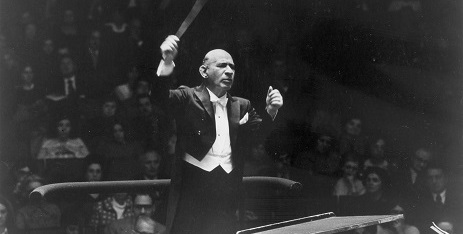
Pittsburgh Symphony Orchestra conductor William Steinberg during Matilda (Hood) Brereton's term on its Women's Association - Public Broadcasting System In her own right, Matilda became active in the Fox Chapel Community Episcopal Church, Fox Chapel Garden Club and Women's Association of the Pittsburgh Symphony Society. She held the post of Society president in 1964-1965, with some of her predecessors including Mrs. Arthur M. Doty and Mrs. Robert Boyd McKee. Among their projects circa 1966-1968 was organizing the annual Gala, Ruby Ball and the Junior Symphony Ball. As such, she was pictured with her committee in the Pittsburgh newspapers. The Breretons retired in 1969 to Sarasota, FL, where they held a membership in the St. Boniface Church. At the age of 85, Matilda passed away in Sarasota on July 25, 1991. Her obituary was published in the Birmingham Herald. Daughter Dale wed Edmund S. DiIorio and lived in Norwell, MA. On July 13, 1979, daughter Eugenia married Louis Anthony Senneville ( ? - ? ), son of Col. Louis Senneville of Angola, IN, with the nuptials held in the St. Boniface Church of Sarasota and established a home in Orlando and Windermere, FL.
Daughter Lela "Nelly" Houpt (1863-1894) was born in about 1863. As a young woman, she taught school in Belmont, AL, and appears to have given plays and performed music in parties hosted by her mother. She made news in 1885 when attending an exposition and bringing back souvenirs for each of her pupils. Then in 1887, she appears to have donated a silver communion service for the Methodist Episcopal Church of Belmont. On Jan. 22, 1891, she joined her hand in marriage with Stephen Pitts Smith (1853-1905) of Meridian, in nuptials led by Rev. J.M. Patton. News of the happy event was printed in the Livingston Journal, which said that "Mr. Smith is surely to be congratulated upon having won our exceedingly worthy young lady. Our best wishes attend them through life." The newlyweds settled in Meridian, MS. The family rejoiced in the June 1, 1894 birth of their daughter Lela Stephanie. But doom replaced the joy a month later when mother Leila died at the age of 29, on July 1, 1894, in Lauderdale County. The body was brought back to Demopolis to sleep with her forbears in Houpt Cemetery.
- Granddaughter Lela Stephanie Smith (1894-1979) was born in 1894 and was a month old at her mothr's death. Lela wed Herman Grey Speed (Nov. 22, 1892-1928) and lived in McDowell. They were the parents of Louis Haupt Pinkney Speed (1914-1945), Elizabeth Dale Speed (1916-1917), Lela Dale Speed (1918-2001) and Helen Hermione Gideon (1923-1994). In May 1932, Lela Dale Speed as a 15-year-old student in Belmont captured the American's Washington Bi-Centennial Essay Contest, with Our Southern Home reporting that she "has always been a bright studious girl, who is to be congratulated on winning a diploma of merit."
~ Who Were the Free Black Families Named "Houpt" in Sumter County? ~
Returning to the subject of the Black families of Houpt -- a man named "Sam Houpt" was tried in Sumter County Court on criminal charges, case 2310, in late February 1886, as reported in the Livingston Journal. He also was tried in the Circuit Court of Sumter County in the Spring Term of 1887 in a case brought by the State of Alabama. Perhaps this same Sam Houpt of McDowell, known to be Black, published a heavily misspelled letter in the Journal dated July 12, 1887, addressed to local lawyer and county official Addison Gillespie "A.G." Smith, which the editor quipped "requires no explanation nor introduction":
A.D. Smith.--Dear Sir: We want to oginize our betating Society we want to know what you allow us to debate on & what should be the law under scircumstances & let me know what you will record our bate for Pass your best Judgement on it and let me know if it is aginst the laws of us to have it if we does not wish to brake the laws of Said county if you only please make us out a Bill what we should low on nothing else. Your, truly Sam, Houpt. Direct to McDowells.
Smith published his reply in the same edition of the newspaper:
Livingston, July 14, '87. Sam Houpt (colored), McDowells. Sam: Your Letter to hand in regard to the debating society. You have my permission to form your debating society, and I wil "pass my best judgment" on how you should conduct it. You must never debate politics, nor religion, for these questions will usually result in more broken bones and bloody noses than good to yourselves or the county. No man must take more than two drinks of fighting whisky on the nights the debate are to be had; if he does, turn him out, for he will be a sorrow unto you if you let him in. Establish a rule that no man shall carry a weapon of any kind to the debates -- especially white handled razors -- for if this is done, it might happen that in the heat of argument some good farmer would lose a farm hand. Debate, at first, simple questions; such as these: Which is the butt end of a goat? When a house burns, does it burn up or down" What each one thinks of the instability of American institutions and the certain decay of all human grandeur? Don't allow the women to debate with you; if you do, they will out-talk you in spite of all your eloquence. Besides this, when women get mixed up in matters which pertain to men alone, it is suggestive of hair-pulling and smashing of teeth. Let no man worry the society with his eloquence for more than one hour at a time, and never hold over later than three o'clock in the morning. Allow no man to put a Rabbitt's foot on the President of the Society. Observe these rules and report progress to me. A.G. SMITH.
Sam Houpt's name also appears in an 1880 Sumter County census of agriculture, showing that he rented a 60-acre tract in Belmont in return for a share of his products, otherwise known as a "sharecropper." At the time he owned equipment valued at $10 and livestock worth $200, including two oxen and four milch cows. He also disclosed that he had produced 30 lbs. of butter the past year. Other records show that a Sam "Haupt" married Hattie Gulley on Christmas Eve 1890 in Sumter County. Are they all the same man? Or not?
~ Daughter Nancy "Anna" (Haupt) McDowell ~
Daughter Nancy "Anna" Haupt (1821-1866) was born on (?), 1821. She was said to be "an educated and intellectual woman," as profiled in Thomas Marshall Green's book Historic Families of Alabama. Nancy's name was printed in the Livingston (AL) Voice of Sumter in October 1836 for not yet having collected a letter to her being held in the Livingston Post Office. In about 1852, at the age 31, Anna married widower Alexander Keith Marshall "A.M." McDowell (April 19, 1806-1892), son of Samuel and Anna (Irvine) McDowell of Cynthiana, KY. Together, Anna and Alexander bore several known children, including Louise Irvine (McDowell) McDowell, William McDowell, Marshall McDowell, Joseph Sebastian McDowell, Anna McDowell and Lewis McDowell. Alexander's profile in Historic Families said that his:
...childhood was passed in Mercer [KY]. His mother dying when he was about ten years old, he was sent to Franklinton, Ohio, where he lived, alternatively, with his two elder brothers, and attended school. Later, he received instruction at the academy of the learned and celebrated Dr. Priestley, in Tennessee, where one of his classmates was Andrew J. Donelson, and afterward was sent to the college at Nashville. On attaining maturity, he bought land near Palmyra, Missouri, and while living there, married Priscilla, daughter of General Robert [Breckinridge] McAfee -- the historian of, and a gallant officer in, the War of 1812 -- who had removed from Kentucky to Missouri. After a brief residence in Missouri, he determined to settle permanently in the South; and while proceeding thither with his wife and their infant.
Alexander left Kentucky and "Went west" in 1829. He is known to have taken part in the Black Hawk War, of 1832, receiving a wound in the knee which disabled him for life. Five years later, his world was turned upside down in the Ben Sherrod steamboat tragedy of May 8, 1837. At the time, the McDowells were residing in Belmont, Sumter County in Alabama. The tragedy happened about midnight, when the Sherrod was in a race with the steamer Prairie on the Mississippi River. The Sherrod caught fire when its drunken crew allowed the boilers to become red-hot, which ignited stacks of wood and engulfed the vessel in a conflagration. According to an account in the Charleston (SC) Daily Courier, reprinted in the New York Daily Sun and Baltimore Sun, the steamboat Alton arrived soonafter, with its wake capsizing a number of passengers who had been floating on the wreckage. The Daily Courier added that "but from the carelessness or indiscretion of those on board, was the means of drowning many persons who were floating on the water... Mr. McDowell attributes the drowning of his wife to the indiscretion of the managers of the Alton, as she was floating safely on a plank at the time. Mr. McDowell sustained himself some time against the current, so that he floated only two miles down the river, and then swam ashore ten miles above Fort Adams... Mr. McDowell lost his wife, son, and a lady named Miss Frances Few, who was under his protection; also a negro servant."
 |
| Catastrophic fire aboard the 'Ben Sherrod,' 1837, in which Alexander McDowell lost his 1st wife, young son and a slave. - Courtesy Lloyd's Stemboat Disasters and Internet Archive |
As a widower, after moving briefly to Missouri and then selling his property, he took his servants to Demopolis, Marengo County, AL, where be bought a cotton plantation. When the 1850 U.S. census was made, Anna and Alexander dwelled in Marengo, with 35-year-old Morris O'Connor, a Irish immigrant, living under their roof, possibly as an overseer of the workforce of slaves. A separate census schedule of their slaves that year shows that they owned 14 slaves, ranging in age from 2 months to 60 years. Records also show that from Oct. 12, 1850 to Oct. 8, 1854, he was employed as a receiver in the land office of the Demopolis municipality. Also in 1854, he was a stockholder and secretary/treasurer of the Marengo Plank or Covered Road Company, which had received a loan from the State of Alabama in exchange for bonds to finance a new road in the community. Repayment of the loan, amounting to over $18,950, became an issue when the company tried to repay the loan in Confederate currency in 1864, a currency that was now illegal. As of 1872, the debt issue was tied up in litigation in the case Jemison et. al. vs. Governor of Alabama. Alexander went on to employment as a civil engineer, "for which he had been educated, until about four years before the war, when he became a resident of Demopolis," said Historic Families.
By 1860 -- the year before the outbreak of the Civil War -- census records of Demopolis show Alexander's occupation as civil engineer, and may have already disposed of the cotton farm, as he has not been found in a similar slave census schedule for that year. Historic Families went on to say that "His condition did not prevent his early enlistment in the southern army, but he was soon detailed from the line to other and more important duties." In fact, he is known to have served as a major in the 43rd Alabama Infantry. Then at about the time of the Confederate surrender, he was chosen probate judge of Marengo County, just across the Black Warrior River, in what was then the county seat of Demopolis. His lifetime of heartbreak was compounded when 45-year-old Anna died in Demopolis three days after Christmas 1866. Her remains were interred in Houpt Cemetery, with a tall marker erected at the site, inscribed with the scripture, "I know that my redeemer liveth." In 1868 he sold out what possessions in Alabama the war had left him, and removed to St. Louis, where he remained until 1873, when he became a citizen of Cynthiana [KY], and afterward clerk of the Harrison circuit court. A handsome, stately gentleman, of winning and graceful manners, sunny temper, extensive reading, and attractive gifts, he is also an uncompromising Calvinist." Alexander passed away in the home of his son on June 15, 1892. Burial was in Battle Grove Cemetery in Cynthiana. An obituary in the Clarksville (TN) Leaf-Chronicle said that he "was largely connected in Lexington and was a wealthy, influential and honored citizen." A one-sentence death notice appeared in the St. Louis Globe-Democrat. A tall, prominent, red stone was placed at the grave. Their family is spelled out in Dorothy Kelly MacDowell's book McDowells in America: A Genealogy. He was profiled in the book The Irvines and Their Kin, by Lucinda Joan (Rogers) Boyd:
Judge McDowell was as near perfect manhood as a human being could be. He was a scholar, a soldier, and a true Christian. At the time of his his death it was said of him: Judge McDowell has bequeathed to his descendants a legacy of far more worth than the long line of ancestry from which he came, or the armorial bearing that would hav been carved above his place of repose had he died in Scotland, the father of his people -- a spotless name. Carve above his tomb, "Resurgam." He was a true Christian.
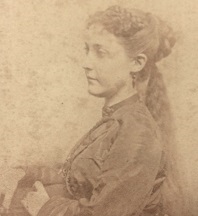
Louise and Dr. Hervey McDowell
Courtesy "HistoryNut" (left) and Annette Bradford (right)
Daughter Louise Irvine McDowell (1840-1916) was born on Dec. 2, 1840. In 1860, unmarried, she lived at home with her parents in Marengo County, AL. She wed a cousin, Dr. Hervey McDowell (April 16, 1835-1901), son of John Lyle and Nancy Hawthorne (Vance) McDowell of Cynthiana, KY. He was described in Green's Historic Families of Kentucky as "With a large, well-formed head, a square forehead and prominent brow; a very large, clear, pale-blue eye that looks squarely at you and sometimes glitters like steel; a full jaw and chin, indicating the utmost resolution and force; an athletic person -- with features that are so peculiar to his race... About his manner there is a quiet reserve; his appearance and bearing impress all who meet him as those of a man absolutely impenetrable to fear, and as absolutely incapable of falsehood and any kind of meanness. The soldieers who fought by his side in the Confederate army describe his courage as heroic, his coolness and composure under the heaviest fire as phenomenal. These characteristics were most amply tested ... in prison, in camp, on the march, in the hottest fights of the bloody war; in victory and defeat; always uncomplaining, calm, energetic and daring, he exhibited the best qualities of a soldier." Their large brood of offspring included Rev. Hervey McDowell Jr. (1871-1943), Marshall McDowell (1872-1939), Edward Campbell McDowell (1874-1955), Marion S. McDowell (1876-1900), Sebastian Haupt McDowell (1877-1926), Anna Mary McDowell (1879-1894) and Jo Desha McDowell (1883-1958).
Hervey and his parents moved to Owen County, KY when he was 12, and they settled along the Kentucky River. After completing his grade school studies, he took a preparatory course at Drennon Springs and then in 1856 graduated from the Kentucky Military Institute at Frankfort. Desiring a career in medicine, he studied under Dr. Ethelbert Dudley and Dr. Henry Skillman at Lexington and attended the annual meetings of the Missouri Medical College in St. Louis, graduating in 1858. He then moved to Cynthiana, KY, practicing medicine for two years. At the outbreak of the Civil War, said the book History of the Orphan Brigade, "he took fire, after the manner of the old Covenanter, who had impressed his traits so powerfully on his descendants, and entered the Confederate army. Hervey was placed in the 2nd Kentucky Infantry (Hanson's), Company F. He took part in all of his regiment's engagements and was promoted to captain and then to major after the Battle of Chickamauga and lieutenant colonel in 1864 after the Battle of Jonesboro. He was severely wounded in the head and side in the Battle of Fort Donelson and taken prisoner, shipped to the Union POW camp at Johnson Island, OH, along Lake Erie. He finally was exchanged and returned to Vicksburg, with his regiment combining with others to form the Orphan Brigade. Other battles in which he fought were Hartsville, Stones River, Mission Ridge and many skirmishes from Dalton to Jonesboro, "to the sea and through the Carolinas." He was wounded in both arms at Stones River and hit in three other places and also received a wound at Chickamauga. After the war, he joined the Ben Desha Camp No. 99 at Cynthiana, believed to have been a Confederate veterans group. He is pictured in W.E. Mickle's Well Known Confederates and their War Records (New Orleans, 1907).
Louise is said to have been "an accomplished lady, of native talent broadened by elegant culture, whose general and accurate information, not less than her ready and sportive wit, render her the most interesting of correspondents, the most charming of conversationalists." She was a member of the Daughters of the American Revolution (no. 11532) based on the service of her grandfather, Samuel McDowell Jr., said to have fought in Lafayette's army and who was at the siege of Yorktown. Hervey in the postwar years was an elder in the Presbyterian Church and in 1878 elected president of the Cynthiana school board. Sadly, Hervey passed away on Nov. 6, 1901. An obituary in the Paris (KY) Bourbon News said he was "one of the best known and best loved physicians in Central Kentucky... Dr. McDowell belongs to the family of that name so distinguished in early history of Kentucky, and added luster to the reputation of a race of men rarely equalled for their noble qualities." Louise outlived her husband by 15 years. Death enveloped her on Feb. 23, 1916. Son Edward wed Rosa Gray Pickett ( ? - ? ), and son Sebastian was a farmer in Cynthiana and belonged to the Masons and Elks organizations. Son Rev. Hervey Jr. was an 1893 graduate of Washington and Lee University and married Jane Kavanaugh Lusk (Dec. 20, 1870- ? ), daughter of William Jennings Lusk, and produced two daughters, Elizabeth Lusk McDowell and Mary Louise McDowell. Hervey Jr. and Jane lived in Garyville, LA, spent their summers in "Argyle" near Heldelbert, MS.
Son William McDowell (1843- ? )
Son Marshall McDowell (1845-1846) was born on May 4, 1845. He only lived for 16 months until the angel of death cleaved him away on Sept. 21, 1846. The remains sleep for all eternity in Houpt Cemetery.
Son Joseph Sebastian McDowell (1847-1851) was born on Sept. 4, 1847. Joseph died at the age of four on Dec. 7, 1851. Burial of the remains was in the family graveyard.
Daughter Anna McDowell (1849- ? ) grew up in Demopolis, Marengo County, AL. She is said to have "died unmarried" as per an entry in the 1908 book, Genealogy of the Greenlee Families, by Ralph Stebbins Greenlee and Robert Lemuel Greenlee.
Son Lewis McDowell (1854- ? ) was born in about 1854.
~ Daughter Sebastiana M. Houpt ~
Daughter Sebastiana M. Houpt (1836-1843) was born in Jan. 1836.
Sadly, she did not live past childhood.
The spirit of death whisked her away in late Oct. 1843, at the age of about seven.
Her tender remains were placed into eternal sleep in the family's Houpt Cemetery. A stone was erected at her grave, and is still legible today.
|
Copyright © 2023-2024 Mark A. Miner |
Research for this page conducted by Della Shafer and the late Donna (Younkin) Logan |
